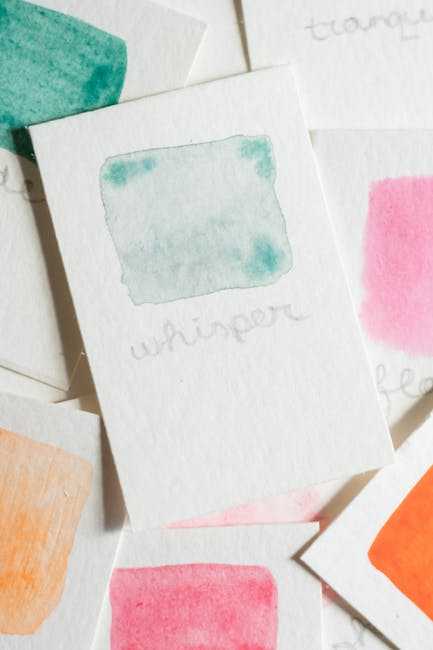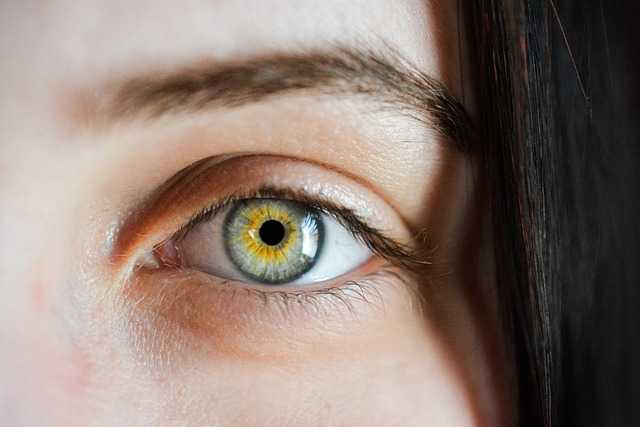Table of Contents
- Choosing the Perfect Watercolor Supplies for Flower Painting
- Mastering Basic Watercolor Techniques for Stunning Blooms
- Exploring Color Theory to Enhance Floral Watercolor Art
- Detailed Brushwork: Capturing the Intricacies of Petals and Leaves
- Q&A
- The Conclusion
Choosing the Perfect Watercolor Supplies for Flower Painting
When it comes to crafting breathtaking floral watercolors, the choice of materials can profoundly impact the outcome. Artists must consider an array of supplies that capture the essence and delicate beauty of flowers. At the forefront are high-quality watercolor paints, which provide both rich pigmentation and the ability to create delicate washes. For florals, consider colors that reflect the natural spectrum of blooms, such as cadmium yellow, alizarin crimson, and ultramarine blue.
An essential component of your toolkit will be the watercolor paper. The texture, weight, and absorbency of the paper all play critical roles. For flower paintings, a cold-pressed paper is often recommended due to its moderate texture, which allows for fine detail without overwhelming the softness of the pigments. Look for papers that are at least 140 lb weight, as these will hold water without warping.
- Brushes: Look for a variety of brushes, including round brushes (sizes 2 to 10) for versatility in detail and wash applications.
- Palette: A ceramic or plastic palette with multiple wells will help manage your colors effectively.
- Kneaded Eraser: Useful for lifting pencil marks without leaving residues as you draft your flower arrangements.
| Supply | Recommendation |
|---|---|
| Paint | Professional-grade watercolors set |
| Paper | 140 lb cold-pressed |
| Brushes | Sable or synthetic blend |
Don’t overlook the importance of a sturdy easel and a reliable sketching tool. An adjustable easel will help you maintain the correct posture when painting, which is essential for long sessions. Meanwhile, utilize a sketching pencil or watercolor pencil to outline your floral designs before adding paint. Exploring different brands and experimenting with various techniques will help you find the perfect combination that aligns with your artistic vision and style.


Mastering Basic Watercolor Techniques for Stunning Blooms
Delving into watercolor painting offers a rich avenue for creative expression, especially when you explore the vibrant world of florals. To capture the natural beauty of blooms, understanding and mastering basic techniques is essential. Begin by familiarizing yourself with supplies like quality watercolor paper, brushes, and paints. The paper’s texture plays a significant role in the outcome of your work, enhancing or hindering your color application. Choose brushes that suit the delicate nature of flowers, typically round brushes that provide both broad strokes and fine lines. This foundation will set you up for successful and stunning representations.
- Wet-on-Wet Technique: Apply a wash of water to the paper before adding color to achieve soft, blended backgrounds. This method is particularly effective for seamless transitions in petals and leaves.
- Wet-on-Dry Technique: For more defined details, apply paint directly onto dry paper. This technique allows for precision in areas where you want to highlight intricate details, like the veins of leaves.
- Color Layering: Start with lighter washes and build up to deeper colors as each layer dries, adding depth and dimension to your flowers.
To bring your floral subjects to life, focus on contrast and highlights. Proper use of shadows enhances the three-dimensional feel of petals and foliage, using darker shades along the edges or base of petals, where shadows naturally form. Conversely, leaving certain areas untouched or lightly painted can simulate highlights, encapsulating the way sunlight dances on the blooms. Remember, capturing the essence of a flower also involves paying attention to its core colors and vibrancy, ensuring your artwork possesses a lifelike quality.
| Technique | Effect |
|---|---|
| Wet-on-Wet | Soft and blurry transitions |
| Wet-on-Dry | Sharp and defined details |
Embrace the fluidity of watercolors by incorporating spontaneity and improvisation into your practice. Allowing water and pigment to interact organically can lead to unexpected and beautiful results. Instead of striving for absolute control, let go of rigid expectations and appreciate the serendipitous effects this medium offers. Experiment with various pigment and water ratios to achieve different transparencies and opacities, granting your artworks a unique signature. Through these imaginative explorations, every stroke of your brush can become a testament to the unpredictable beauty of nature’s finest creations.


Exploring Color Theory to Enhance Floral Watercolor Art
The subtle interplay of colors in floral watercolor art can transform a simple painting into a stunning masterpiece. Understanding the fundamentals of color theory opens up a world where hues, tints, and shades blend harmoniously to achieve the desired effect. Primary and secondary colors form the backbone of these principles. Artists should pay attention to complementary colors, as they can create striking contrasts that draw attention to key elements in your floral compositions. Consider how reds and greens, or purples and yellows can be used to make petals stand out with vibrancy.
In the world of watercolor, it’s crucial to master the art of mixing colors to get the perfect palette. Creating custom shades adds uniqueness to your work. Imagine a warm pink achieved by mixing a dash of red with just a hint of yellow. Experimenting with wet-on-wet and wet-on-dry techniques can further enhance the effects of color blending and transitions. Such experiments often lead to unexpectedly beautiful outcomes that can redefine your artistic style.
Keys to color blending in floral watercolors include:
- Allowing pigments to bleed naturally for organic transitions.
- Varying the water-to-color ratio to explore transparency.
- Layering light over dark to create depth and dimension.
Using a palette knife or brush for refining edges is also effective in certain areas of your painting, especially where you want to maintain the crisp silhouette of petals against a softer, more diffused background.
| Color Combination | Effect |
|---|---|
| Blue & Orange | Captivating Contrast |
| Red & Yellow | Warmth and Energy |
| Green & Violet | Subtle Sophistication |
By diving into the depths of color theory, artists can unlock their true potential in floral watercolor painting. The key is to practice consistently and fearlessly explore new techniques. With a keen eye for color harmony and contrast, your floral pieces will not only capture the beauty of nature but also resonate with viewers on a deeply emotional level. Remember, every brush stroke is an opportunity to express something vibrant and original.


Detailed Brushwork: Capturing the Intricacies of Petals and Leaves
Watercolor painting offers a unique challenge when it comes to mastering the elegance of natural elements. When focusing on petals and leaves, artists must pay close attention to the subtle variations in tone and texture that make each element unique. Delicately balancing color blending and precision, artists layer wash upon wash to create a vibrant yet soft rendition. The transparency afforded by watercolors is perfect for capturing the light play on petals, turning each subtle variation into a rich tapestry of colors.
For painting petals and leaves with great detail, understanding the anatomy of flowers is crucial. Petal veining and the thin, almost translucent surfaces require a different approach compared to the thicker, sometimes wax-like leaves. Artists often employ techniques such as glazing and layering to build depth without losing the inherent lightness of watercolors. Consider using a blend of wet-on-wet techniques for smoother transitions and wet-on-dry techniques for crisp, defined edges.
- Layering: Start with a light base, gradually adding depth with successive layers.
- Color Wheel: Use complementary colors to highlight shadows and depth.
- Brush Selection: Choose a range of brush sizes for both broad strokes and fine details.
Incorporating a detailed color profile of your subject is essential in watercolor painting. Consider including a color reference table to maintain consistency across your artwork:
| Element | Primary Colors |
|---|---|
| Petals | Pink, Purple, Cream |
| Leaves | Green, Olive, Yellow |
This structured approach, supported by intimate knowledge of floral anatomy and deliberate techniques, leads to a composition that is as enchanting as the flowers themselves. Let your brush capture not just the form, but also the essence of the petals and leaves, highlighting their delicate dance in nature’s embrace.
